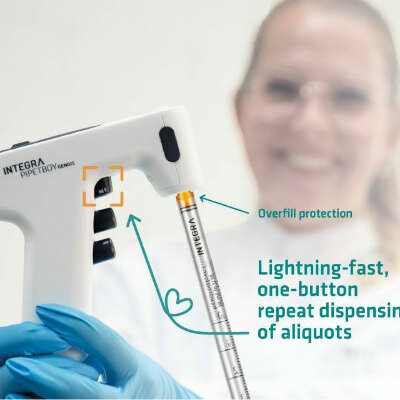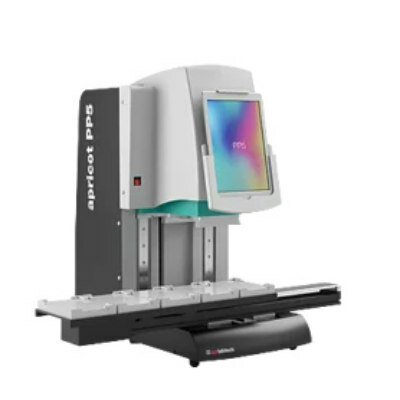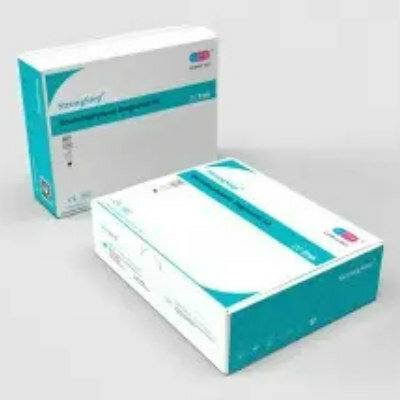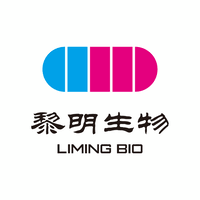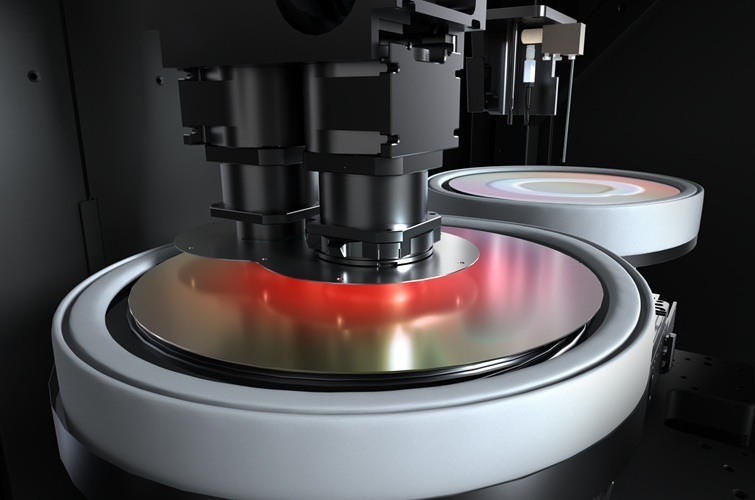Nanoparticle Delivery Increases Effectiveness of Anti-Cancer Immunotherapy
|
By LabMedica International staff writers Posted on 10 May 2018 |
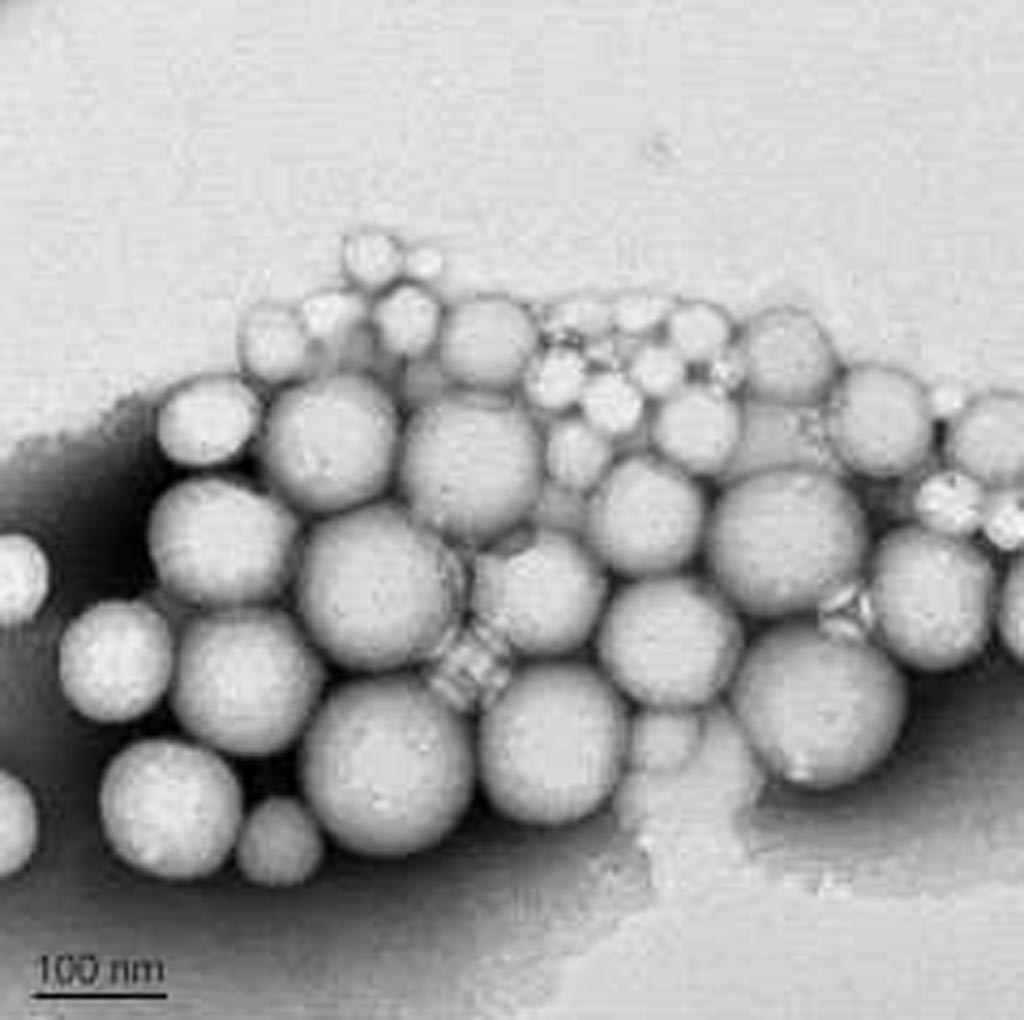
Image: Nanoparticles loaded with the dual immunotherapy platform (Photo courtesy of UNC Lineberger Comprehensive Cancer Center).
A nanoparticle delivery system was used to transport antibody-based immunotherapeutic drugs in trials conducted in cancer cell in vitro cultures and in animal models.
Combination immunotherapy has recently emerged as a powerful cancer treatment strategy. A promising treatment approach is based on the simultaneous administration of antagonistic antibodies to block checkpoint inhibitor receptors, such as anti-programmed cell death‐1 (PD1). Immune checkpoints are regulators of the immune system. These pathways are crucial for self-tolerance, which prevents the immune system from attacking cells indiscriminately.
In this treatment strategy, antibodies targeting checkpoint inhibitor receptors are given together with agonistic antibodies to activate co-stimulatory receptors, such as anti-tumor necrosis factor receptor superfamily member 4 (OX40). OX40's value as a drug target resides primarily in it being transiently expressed after T-cell receptor engagement. It is only upregulated on the most recently antigen-activated T-cells within inflammatory lesions.
Optimal T‐cell activation is achieved when both immunomodulatory agents simultaneously engage T‐cells and promote synergistic pro-activation signaling. However, standard administration of these therapeutics as free antibodies results in suboptimal T‐cell binding events, with only a subset of the T‐cells binding to both PD1 and OX40.
To increase the changes of simultaneous binding of both classes of antibody, investigators at the University of North Carolina (Chapel Hill, USA) developed nanoparticles capable of simultaneous co-delivery of antibodies to PD1 and OX40.
They reported in the April 25, 2018, online edition of the journal Advanced Materials that using these dual immunotherapy nanoparticles (DINP) resulted in improved T‐cell activation, enhanced therapeutic efficacy, and increased immunological memory. They demonstrated that DINP elicited higher rates of T‐cell activation in vitro than free antibodies. Furthermore, they showed in two tumor models that combination immunotherapy administered in the form of DINP was more effective than the same regimen administered as free antibodies.
"Our study suggests that if you are able to present two different therapeutics at the same time to immune cells to help them fight cancer, the effect is greater," said senior author Dr. Andrew Z. Wang, associate professor of radiation oncology at the University of North Carolina. "It is difficult to deliver them at the same time unless you tie them together, and a nanoparticle is one great way to tie the two together."
"Our immune cells have both positive and negative signals, like red lights and green lights," said Dr. Wang. "It is part of the balance of the immune system - if you get too much immune activation, you get autoimmune disease. If you go the other way, the lack of immune suppression can give you tumors. We are studying a combination of treatments that both send green light signals to attack, and to block red light signals."
Related Links:
University of North Carolina
Combination immunotherapy has recently emerged as a powerful cancer treatment strategy. A promising treatment approach is based on the simultaneous administration of antagonistic antibodies to block checkpoint inhibitor receptors, such as anti-programmed cell death‐1 (PD1). Immune checkpoints are regulators of the immune system. These pathways are crucial for self-tolerance, which prevents the immune system from attacking cells indiscriminately.
In this treatment strategy, antibodies targeting checkpoint inhibitor receptors are given together with agonistic antibodies to activate co-stimulatory receptors, such as anti-tumor necrosis factor receptor superfamily member 4 (OX40). OX40's value as a drug target resides primarily in it being transiently expressed after T-cell receptor engagement. It is only upregulated on the most recently antigen-activated T-cells within inflammatory lesions.
Optimal T‐cell activation is achieved when both immunomodulatory agents simultaneously engage T‐cells and promote synergistic pro-activation signaling. However, standard administration of these therapeutics as free antibodies results in suboptimal T‐cell binding events, with only a subset of the T‐cells binding to both PD1 and OX40.
To increase the changes of simultaneous binding of both classes of antibody, investigators at the University of North Carolina (Chapel Hill, USA) developed nanoparticles capable of simultaneous co-delivery of antibodies to PD1 and OX40.
They reported in the April 25, 2018, online edition of the journal Advanced Materials that using these dual immunotherapy nanoparticles (DINP) resulted in improved T‐cell activation, enhanced therapeutic efficacy, and increased immunological memory. They demonstrated that DINP elicited higher rates of T‐cell activation in vitro than free antibodies. Furthermore, they showed in two tumor models that combination immunotherapy administered in the form of DINP was more effective than the same regimen administered as free antibodies.
"Our study suggests that if you are able to present two different therapeutics at the same time to immune cells to help them fight cancer, the effect is greater," said senior author Dr. Andrew Z. Wang, associate professor of radiation oncology at the University of North Carolina. "It is difficult to deliver them at the same time unless you tie them together, and a nanoparticle is one great way to tie the two together."
"Our immune cells have both positive and negative signals, like red lights and green lights," said Dr. Wang. "It is part of the balance of the immune system - if you get too much immune activation, you get autoimmune disease. If you go the other way, the lack of immune suppression can give you tumors. We are studying a combination of treatments that both send green light signals to attack, and to block red light signals."
Related Links:
University of North Carolina
Latest BioResearch News
- Genome Analysis Predicts Likelihood of Neurodisability in Oxygen-Deprived Newborns
- Gene Panel Predicts Disease Progession for Patients with B-cell Lymphoma
- New Method Simplifies Preparation of Tumor Genomic DNA Libraries
- New Tool Developed for Diagnosis of Chronic HBV Infection
- Panel of Genetic Loci Accurately Predicts Risk of Developing Gout
- Disrupted TGFB Signaling Linked to Increased Cancer-Related Bacteria
- Gene Fusion Protein Proposed as Prostate Cancer Biomarker
- NIV Test to Diagnose and Monitor Vascular Complications in Diabetes
- Semen Exosome MicroRNA Proves Biomarker for Prostate Cancer
- Genetic Loci Link Plasma Lipid Levels to CVD Risk
- Newly Identified Gene Network Aids in Early Diagnosis of Autism Spectrum Disorder
- Link Confirmed between Living in Poverty and Developing Diseases
- Genomic Study Identifies Kidney Disease Loci in Type I Diabetes Patients
- Liquid Biopsy More Effective for Analyzing Tumor Drug Resistance Mutations
- New Liquid Biopsy Assay Reveals Host-Pathogen Interactions
- Method Developed for Enriching Trophoblast Population in Samples
Channels
Clinical Chemistry
view channel
‘Brilliantly Luminous’ Nanoscale Chemical Tool to Improve Disease Detection
Thousands of commercially available glowing molecules known as fluorophores are commonly used in medical imaging, disease detection, biomarker tagging, and chemical analysis. They are also integral in... Read more
Low-Cost Portable Screening Test to Transform Kidney Disease Detection
Millions of individuals suffer from kidney disease, which often remains undiagnosed until it has reached a critical stage. This silent epidemic not only diminishes the quality of life for those affected... Read more
New Method Uses Pulsed Infrared Light to Find Cancer's 'Fingerprints' In Blood Plasma
Cancer diagnoses have traditionally relied on invasive or time-consuming procedures like tissue biopsies. Now, new research published in ACS Central Science introduces a method that utilizes pulsed infrared... Read moreMolecular Diagnostics
view channel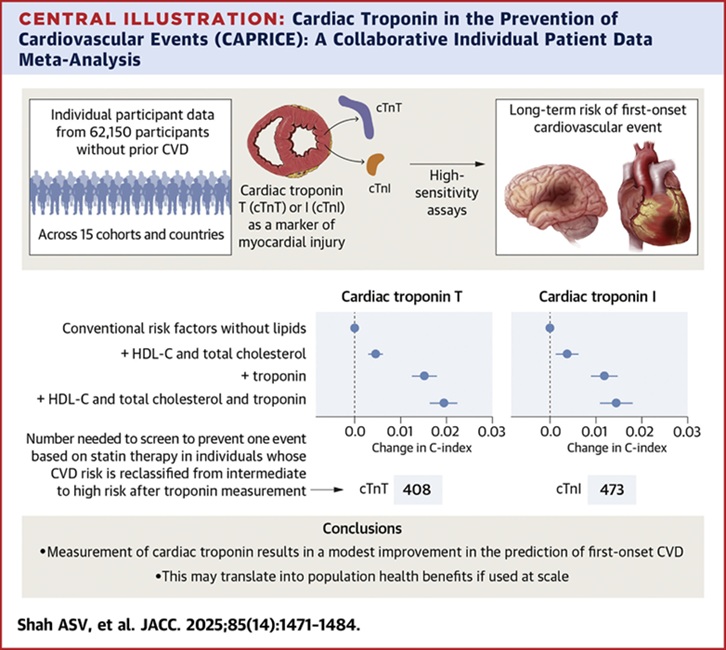
Simple Blood Test Improves Heart Attack and Stroke Risk Prediction
Troponin is a protein found in heart muscle cells that is released into the bloodstream when the heart is damaged. High-sensitivity troponin blood tests are commonly used in hospitals to diagnose heart... Read more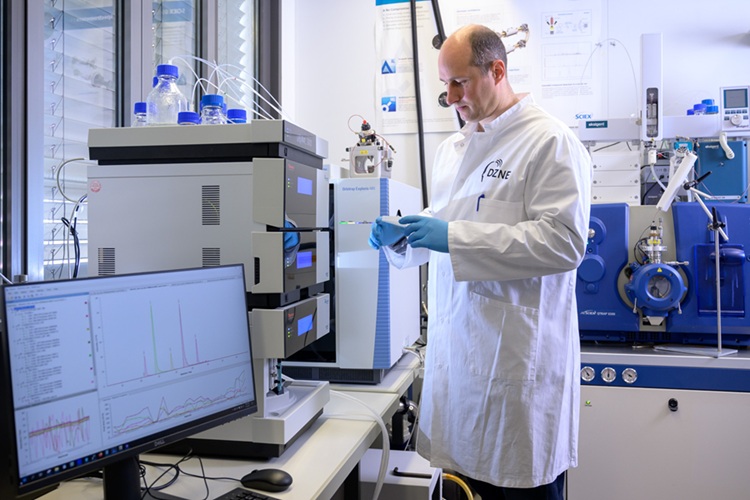
Blood Biomarker Test Could Detect Genetic Predisposition to Alzheimer’s
New medications for Alzheimer’s disease, the most common form of dementia, are now becoming available. These treatments, known as “amyloid antibodies,” work by promoting the removal of small deposits from... Read more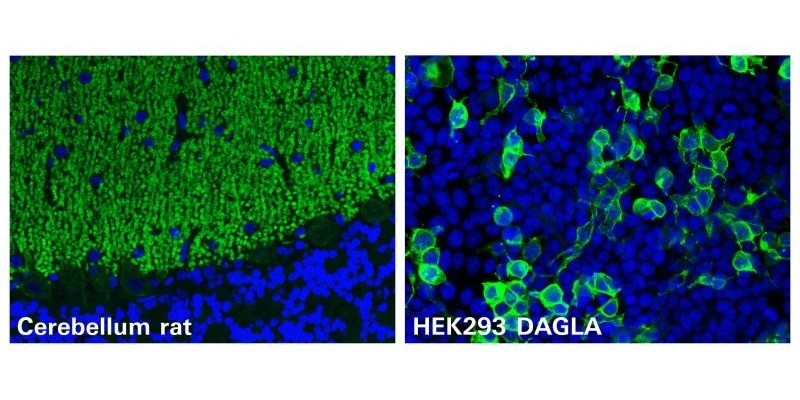
Novel Autoantibody Against DAGLA Discovered in Cerebellitis
Autoimmune cerebellar ataxias are strongly disabling disorders characterized by an impaired ability to coordinate muscle movement. Cerebellar autoantibodies serve as useful biomarkers to support rapid... Read more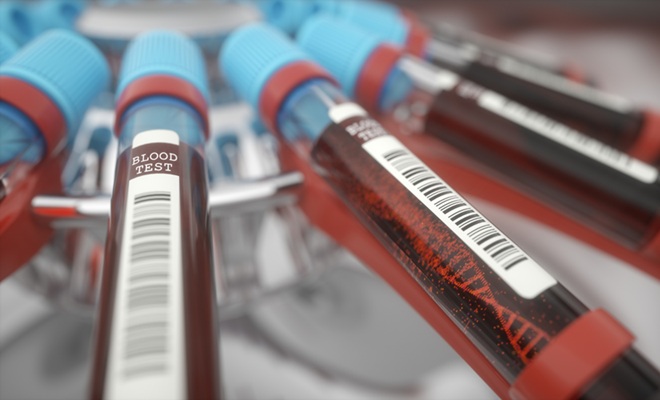
Gene-Based Blood Test Accurately Predicts Tumor Recurrence of Advanced Skin Cancer
Melanoma, an aggressive form of skin cancer, becomes extremely difficult to treat once it spreads to other parts of the body. For patients with metastatic melanoma tumors that cannot be surgically removed... Read moreHematology
view channel
New Scoring System Predicts Risk of Developing Cancer from Common Blood Disorder
Clonal cytopenia of undetermined significance (CCUS) is a blood disorder commonly found in older adults, characterized by mutations in blood cells and a low blood count, but without any obvious cause or... Read more
Non-Invasive Prenatal Test for Fetal RhD Status Demonstrates 100% Accuracy
In the United States, approximately 15% of pregnant individuals are RhD-negative. However, in about 40% of these cases, the fetus is also RhD-negative, making the administration of RhoGAM unnecessary.... Read moreImmunology
view channel
Stem Cell Test Predicts Treatment Outcome for Patients with Platinum-Resistant Ovarian Cancer
Epithelial ovarian cancer frequently responds to chemotherapy initially, but eventually, the tumor develops resistance to the therapy, leading to regrowth. This resistance is partially due to the activation... Read more
Machine Learning-Enabled Blood Test Predicts Immunotherapy Response in Lymphoma Patients
Chimeric antigen receptor (CAR) T-cell therapy has emerged as one of the most promising recent developments in the treatment of blood cancers. However, over half of non-Hodgkin lymphoma (NHL) patients... Read moreMicrobiology
view channel
Handheld Device Delivers Low-Cost TB Results in Less Than One Hour
Tuberculosis (TB) remains the deadliest infectious disease globally, affecting an estimated 10 million people annually. In 2021, about 4.2 million TB cases went undiagnosed or unreported, mainly due to... Read more
New AI-Based Method Improves Diagnosis of Drug-Resistant Infections
Drug-resistant infections, particularly those caused by deadly bacteria like tuberculosis and staphylococcus, are rapidly emerging as a global health emergency. These infections are more difficult to treat,... Read more
Breakthrough Diagnostic Technology Identifies Bacterial Infections with Almost 100% Accuracy within Three Hours
Rapid and precise identification of pathogenic microbes in patient samples is essential for the effective treatment of acute infectious diseases, such as sepsis. The fluorescence in situ hybridization... Read morePathology
view channel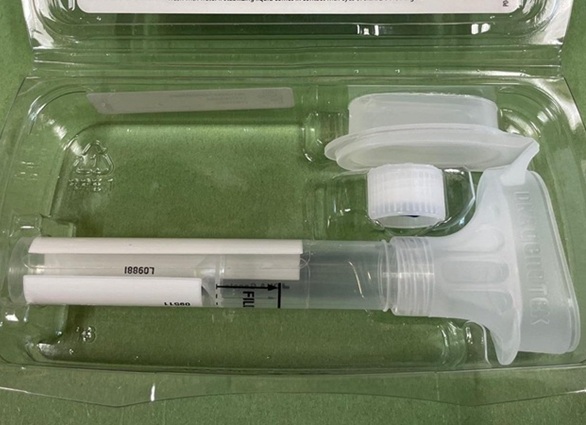
Spit Test More Accurate at Identifying Future Prostate Cancer Risk
Currently, blood tests that measure the level of a protein called prostate-specific antigen (PSA) are commonly used to identify men at higher risk for prostate cancer. This test is typically used based... Read moreDNA Nanotechnology Boosts Sensitivity of Test Strips
Since the Covid-19 pandemic, most people have become familiar with paper-based rapid test strips, also known as lateral flow immunoassays (LFIAs). These tests are used to quickly detect biomarkers that... Read more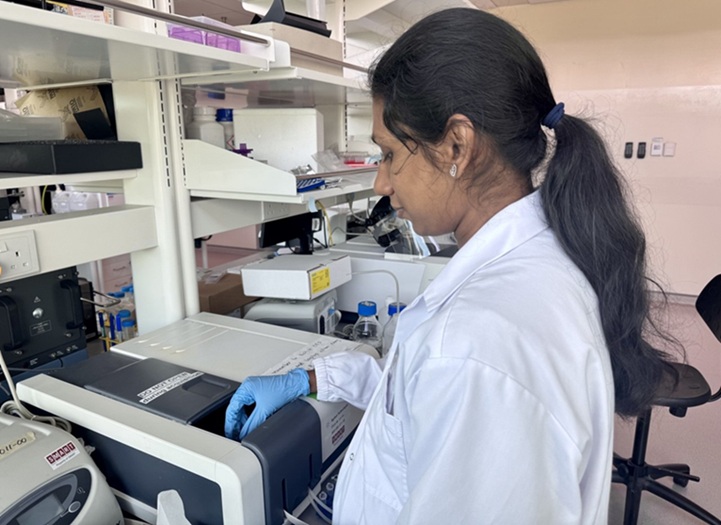
Novel UV and Machine Learning-Aided Method Detects Microbial Contamination in Cell Cultures
Cell therapy holds great potential in treating diseases such as cancers, inflammatory conditions, and chronic degenerative disorders by manipulating or replacing cells to restore function or combat disease.... Read moreTechnology
view channel
Disposable Microchip Technology Could Selectively Detect HIV in Whole Blood Samples
As of the end of 2023, approximately 40 million people globally were living with HIV, and around 630,000 individuals died from AIDS-related illnesses that same year. Despite a substantial decline in deaths... Read more
Pain-On-A-Chip Microfluidic Device Determines Types of Chronic Pain from Blood Samples
Chronic pain is a widespread condition that remains difficult to manage, and existing clinical methods for its treatment rely largely on self-reporting, which can be subjective and especially problematic... Read more
Innovative, Label-Free Ratiometric Fluorosensor Enables More Sensitive Viral RNA Detection
Viruses present a major global health risk, as demonstrated by recent pandemics, making early detection and identification essential for preventing new outbreaks. While traditional detection methods are... Read moreIndustry
view channel
Cepheid and Oxford Nanopore Technologies Partner on Advancing Automated Sequencing-Based Solutions
Cepheid (Sunnyvale, CA, USA), a leading molecular diagnostics company, and Oxford Nanopore Technologies (Oxford, UK), the company behind a new generation of sequencing-based molecular analysis technologies,... Read more
Grifols and Tecan’s IBL Collaborate on Advanced Biomarker Panels
Grifols (Barcelona, Spain), one of the world’s leading producers of plasma-derived medicines and innovative diagnostic solutions, is expanding its offer in clinical diagnostics through a strategic partnership... Read more




